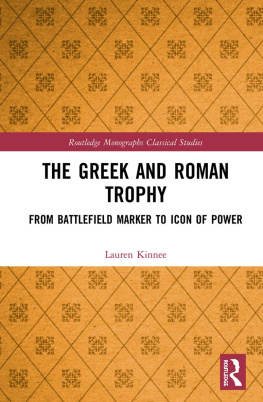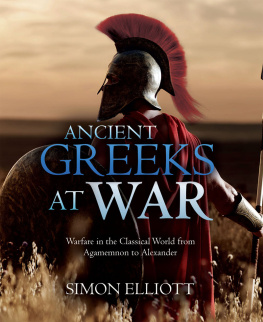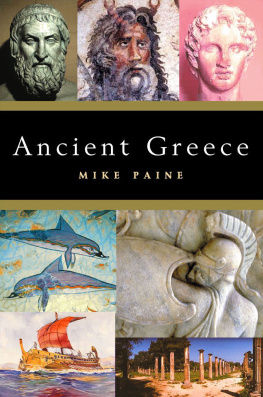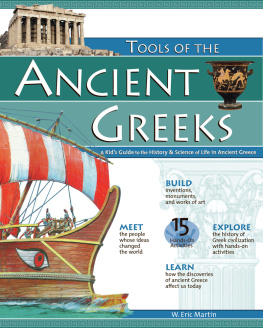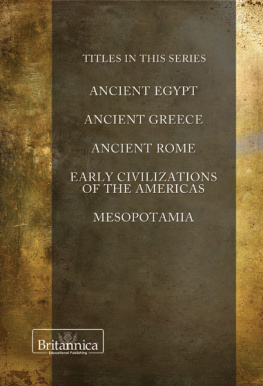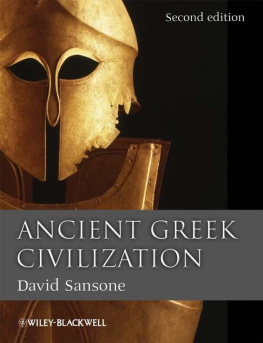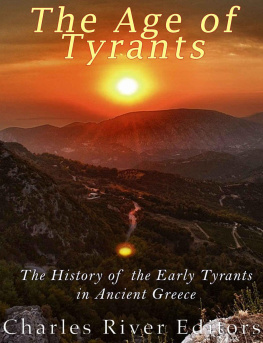HIPPEIS
HISTORY AND WARFARE
Arther Ferrill, Series Editor
HIPPEIS: The Cavalry of Ancient Greece
Leslie J. Worley
First published in 1994 by Westview Press
Published in 2021 by Routledge
605 Third Avenue, New York, NY 10017
2 Park Square, Milton Park, Abingdon, Oxon OX14 4RN
Routledge is an imprint of the Taylor & Francis Group, an informa business
Copyright 1994 by Taylor & Francis
All rights reserved. No part of this book may be reprinted or reproduced or utilised in any form or by any electronic, mechanical, or other means, now known or hereafter invented, including photocopying and recording, or in any information storage or retrieval system, without permission in writing from the publishers.
Notice:
Product or corporate names may be trademarks or registered trademarks, and are used only for identification and explanation without intent to infringe.
Library of Congress Cataloging-in-Publication Data
Worley, Leslie J.
Hippeis: the cavalry of Ancient Greece / Leslie J. Worley
p. cm.
Includes bibliographical references and index.
ISBN 0-8133-1804-1
1. CavalryGreeceHistory. I. Title.
UE75.W67 1994
357.10938dc20
93-29067
CIP
ISBN 13: 978-0-3670-0286-2 (hbk)
ISBN 13: 978-0-3671-5273-4 (pbk)
DOI: 10.4324/9780429032721
To
Marjorie C. Worley,
my mother
Contents
2. The Mycenaean Mounted Warrior
3. Greek Cavalry in the Archaic Period
4. Greek Cavalry in the Periclean Age
5. Greek Cavalry in the Peloponnesian War
6. Greek Cavalry in the Fourth Century B.C.
7. The Cavalry of Philip II and Alexander III
8. Conclusion
- 2. The Mycenaean Mounted Warrior
- 3. Greek Cavalry in the Archaic Period
- 4. Greek Cavalry in the Periclean Age
- 5. Greek Cavalry in the Peloponnesian War
- 6. Greek Cavalry in the Fourth Century B.C.
- 7. The Cavalry of Philip II and Alexander III
- 8. Conclusion
Guide
Figures
2.1 Mycenae terra-cotta horseman (fourteenth century B.C.)
2.2 Horsemen fresco from Mycenae (late Mycenaean period)
2.3 Dark Age Greek mounted warrior (Geometric period)
2.4 Mounted warrior wearing bell-shaped corslet following chariot (late Geometric Attic amphora)
3.1 Spartan hippeus (seventh century B.C. ivory fibula-plaque)
3.2 Thessalian cavalry troop and squadron rhomboid or diamond formations
3.3 Light cavalry depicted on terra-cotta revetment from Thasos (Archaic period)
3.4 A light cavalryman advancing in front of a hoplite (early Protocorinthian aryballos)
3.5 Light cavalry attacking hoplites (sixth century B.C. Attic black-figure band-cup)
3.6 Greek light cavalry attacking barbarian mounted archers (mid-sixth century B.C. Attic black-figure dinos)
3.7 Corinthian heavy cavalry riding into battle (early seventh century B.C. Corinthian wine-jug)
3.8 Athenian heavy cavalrymen, each equipped with two spears, metal helmet, and greaves (mid-sixth century B.C. Attic black-figure mastos)
3.9 Two Greek heavy cavalrymen engage in combat (late sixth century B.C. Attic black-figure vase)
3.10 Corinthian heavy cavalrymen ride toward battle (early seventh century Middle Corinthian vase)
3.11 Greek heavy cavalryman equipped with complete panoply, including hoplon, or large circular shield, engages in heroic combat with Amazon (late seventh century B.C. Attic black-figure amphora)
3.12 Battle scene with cavalry and infantry (early sixth century B.C. Attic black-figure band-cup)
4.1 Athenian cavalry phyle formation
4.2 Athenian cavalrymen practice throwing javelins at suspended shields (fourth century B.C. Attic red-figure crater)
4.3 Light cavalryman throwing his javelin (not shown) at a fallen hoplite, Stele of Dexileos (fourth century B.C.)
5.1 Spartan cavalry mora formations
5.2 Syracusan cavalry squadron in formation
5.3 Siege of Syracuse
6.1 Battle of Leuctra (371 B.C.)
6.2 Battle of Mantinea (362 B.C.)
7.1 Macedonian wedge-shaped cavalry formation
7.2 Battle of Chaeronea (338 B.C.)
7.3 Battle of Issus (333 B.C.)
Acknowledgments
As with any literary endeavor, there are a number of people whose assistance and suggestions were most helpful. I wish to thank them all, from my fellow history graduate students at the University of Washington to the members of the faculty of the Department of History. Special thanks go to Professor Arther Ferrill and Professor Carol Thomas. Arther Ferrill suggested the topic of this book, provided valuable insights and comments early in the writing process, and helped me in the search for a publisher. Carol Thomas read much of the first draft, pointed out a number of inconsistencies and weaknesses, and proposed solutions for these various problems. Further, I wish to acknowledge the support and help of Charles D. Hamilton, professor of history, San Diego State University. He also read much of the first draft and made significant comments, but more importantly, he constantly encouraged me in my work and was someone to whom I could always turn for advice and professional dialogue.
Finally, I wish to acknowledge the assistance of the staffs of the British Museum, the Buffalo Museum of Science, the Heraklion Museum, the Herzog Anton Ulrich Museum, the Louvre Museum, the Martin von Wagner Museum at the University of Wrzburg, the National Archaeological Museum of Athens, and the Staatliche Museum of Berlin. It was through the efficient, prompt, and courteous assistance of these people that I was able to obtain the photographs for this book.
Leslie J. Worley
1
Introduction
DOI: 10.4324/9780429032721-1
In modern works on the military history of ancient Greece, the hoplite has received far more attention and praise than any other warrior. To a degree, this focus is justly deserved because the heavily armed infantryman dominated the battlefields of the Greek world from the Archaic period until the rise of Philip II of Macedon and the Macedonian phalangite. At Marathon, Thermopylae, Plataea, and Cunaxa, the hoplite defeated both Persian infantry and cavalry; at Delium, Coronea, Leuctra, and Mantinea, hoplites were the principal soldiers in the opposing armies. When commanded by such leaders as Leonidas, Pausanias, Agesilaus, Epaminondas, and Pelopidas, the hoplite clearly demonstrated his prowess. And yet, other types of soldiers took part and contributed to victories as well: Light-armed skirmishers known as peltasts played the dominant role at Sphacteria and Corinth, and cavalry was important at Delium, Leuctra, and Mantinea. The modern preoccupation with the hoplite has led to a disregard for or misunderstanding of the roles played by other types of soldiers on the battlefields of the Greek world. Greek cavalry has been especially subject to this neglect.


